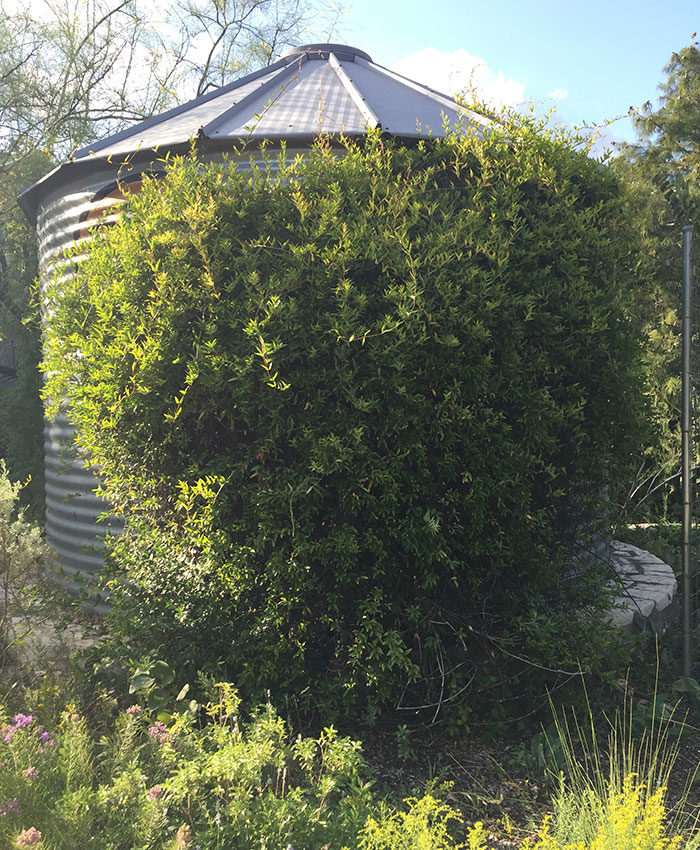
Gardeners are often looking to create areas of shade and privacy in their gardens. Flowering vines are a beautiful way to do both. Arbors, fences, and trellises can be made less stark and more attractive with the addition of flowering vines. Here are a few standout choices for flowering vines that provide good shade and privacy in Southern Plains gardens.
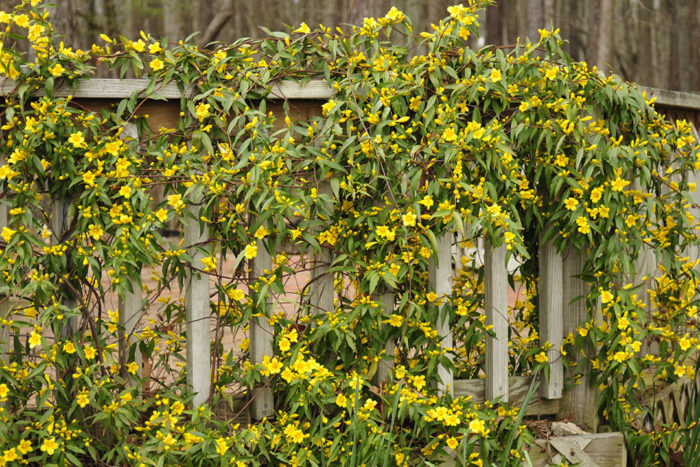
Carolina jessamine (Gelsemium sempervirens, Zones 7–10)
Carolina jessamine is a beautiful, perennial, evergreen vine with yellow blooms and waxy, dark green leaves. The vines can grow up to 30 feet in length and will readily cover trellises and fences, both wooden and wire. It’s not known for growing up brick walls but is often found on fencerows in its native range from Virginia south to Florida and eastward to Texas. While it’s typically called a spring bloomer, it often starts blooming in December or January and keeps on going until early summer. Even though it stops blooming in the heat of mid to late summer, it will occasionally give you another round of color in the fall. It flourishes in a variety of soil types, is tolerant of heat and cold, and blooms best in full sun. This is honestly one of the easiest, most reliable vines to grow in our area, and it is virtually free of pests as well.
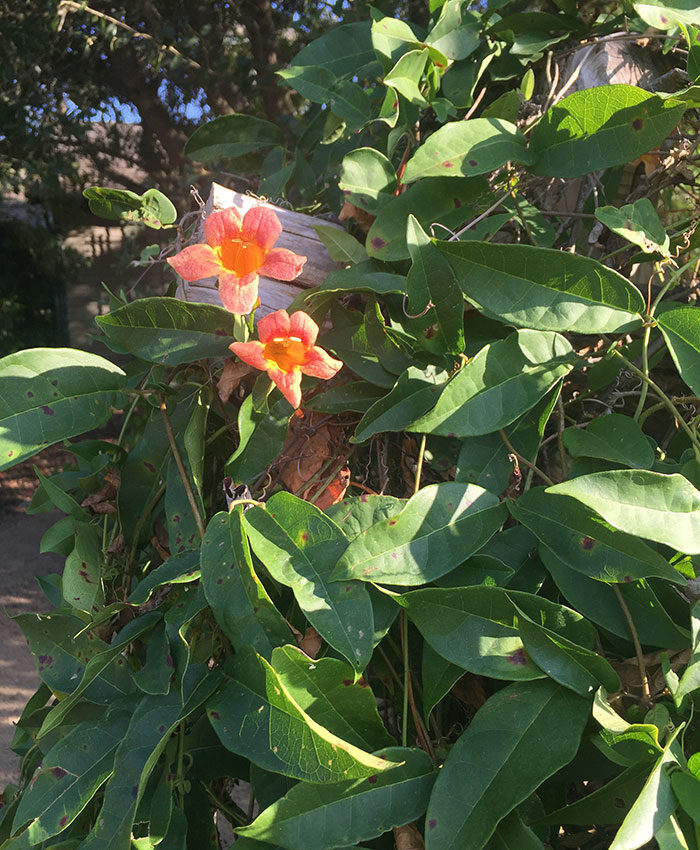
Crossvine (Bignonia capreolata, Zones 5–9)
Ten years ago I built a wire trellis near the front door of my first home and planted a single crossvine at its base. I recently drove past that house, and the current owners had had to fortify the trellis with additional bracing to hold up the gorgeous, full crossvine, which was laden with blooms. This easy-growing vine blooms heavily from March to May in shades of yellow, orange, and brick red depending on the variety. The foliage is dark green in the summer and reddish in the winter, making it an excellent candidate for year-round screening. It blooms best in full sun but will tolerate partial shade, occasional flooding, and occasional drought. Because it has clawlike structures at the end of its tendrils, crossvine is able to climb brick walls as well as wooden structures.
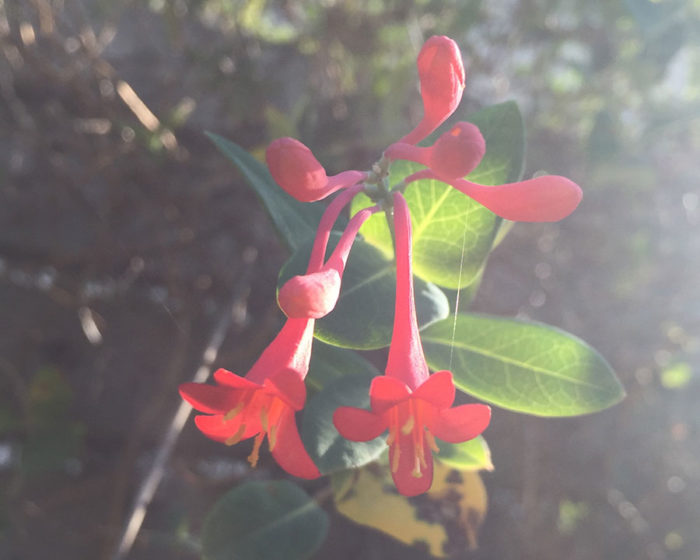
Coral honeysuckle (Lonicera sempervirens, Zones 4–9)
I love the contrast between coral honeysuckle’s vibrant tubular blossoms (red on the outside and yellow on the inside) and its smooth-edged, oval green leaves. It is evergreen or semi-evergreen, so it provides good screening year-round. Coral honeysuckle serves as a larval host to the snowberry clearwing moth (Hemaris diffinis) and as a nectar source for hummingbirds. Its vines reach about 20 feet in length and tend to have an airier, less dense habit than other vines that grow here. It is happiest in areas with good drainage and full sunlight, although in my opinion it blooms enough in partial sun to warrant planting in those conditions as well. If you’re worried that Carolina jessamine or crossvine is too aggressive for your situation, coral honeysuckle just might be the answer. One caveat, however, is that coral honeysuckle can be prone to powdery mildew if it doesn’t get adequate air circulation or soil drainage.
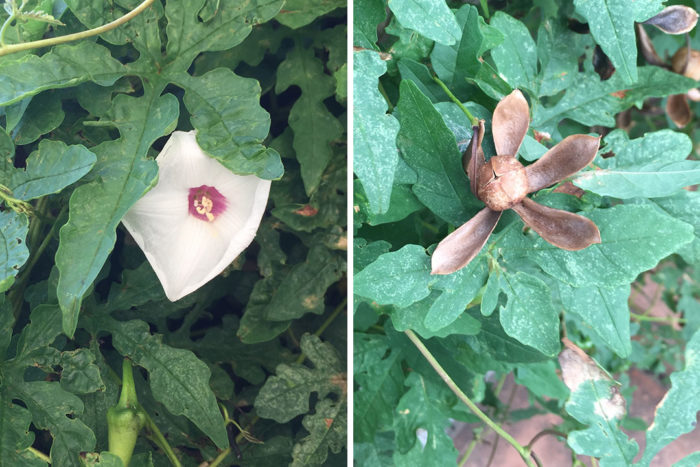
Alamo vine (Merremia dissecta, Zones 7b–11)
Gardeners looking for a slightly more unusual vine for their garden would do well to remember the Alamo (vine, that is). This vine, which is a member of the morning glory family, has intricately divided leaves, creamy white flowers, and beautiful dried seed pods that resemble brown flowers, which are my favorite aspect of this vine. Of the four vines I am profiling here, this is the only one that is deciduous. Its native range is from Florida eastward to Texas, and it is likely not cold hardy north of about Zone 7b (northern Texas and southern Oklahoma). Here in Central Texas we often cut it to the ground in winter, clean out the old debris, and let it resprout fresh in the spring. It grows quickly, and by the end of summer it is full and luxuriant again. It blooms from about May through November and is quite versatile: it does fine in dry or moist soils and in full or partial sun. It seems to tolerate partial sun more readily than the other vines I’ve mentioned here.
All four of these vines make excellent choices for covering fences and walls, providing shade on an arbor or tall trellis, or screening unsightly views. Have an ugly garden shed that you’d love to hide? A chain link fence? A hideous view? These vines will do the trick and look beautiful while they do.
—Karen Beaty is a horticulturalist at the Lady Bird Johnson Wildflower Center in Austin, Texas.
Fine Gardening Recommended Products

Lee Valley Garden Obelisks
Fine Gardening receives a commission for items purchased through links on this site, including Amazon Associates and other affiliate advertising programs.



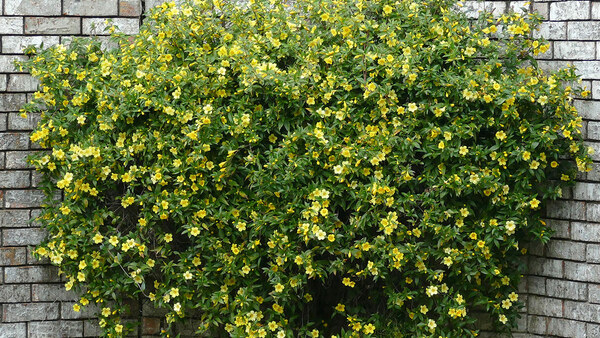
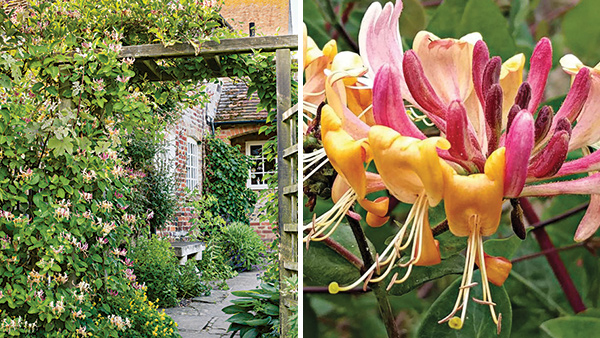
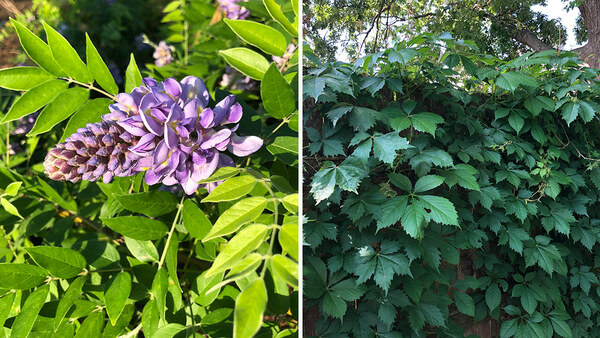













Comments
Log in or create an account to post a comment.
Sign up Log in